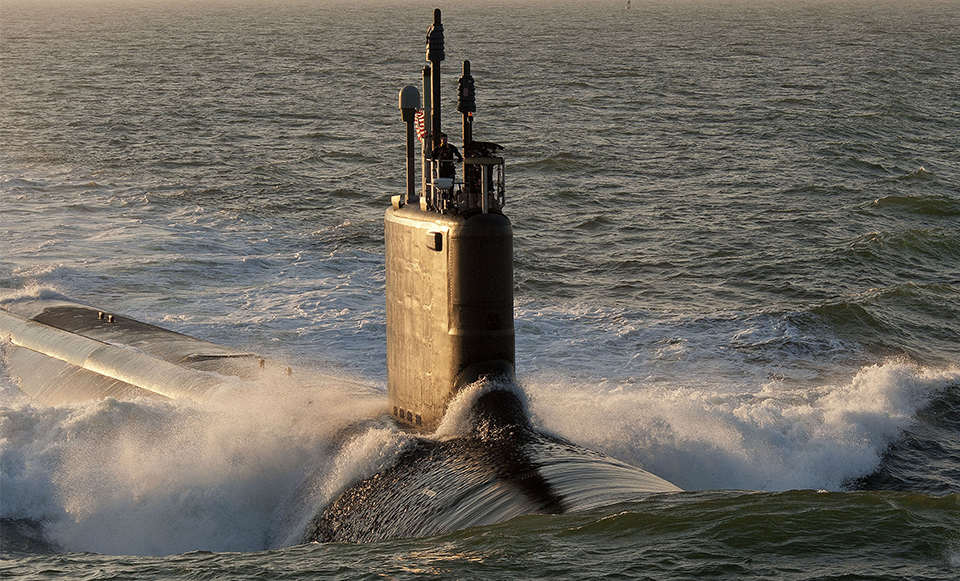
Australia seems far away. Reports in 1994, claimed the then-Prime Minister Paul Keating had allegedly and uncharitably described his country as “the arse-end of the Earth.” More charitably, in 1950, Percy Spender, Australian Minister for External Affairs insisted “No nation can escape its geography, that is an axiom which should be written deep in the mind of every Australian.” Australia’s distance from markets and allies often features in Canberra’s thinking.
Today, however, Australia doesn’t seem too far from allies and markets. Technology and globalization have shrunk the perception of distances. At the same time, however, geography remains important, not because of distance but because of proximity. The rapid growth of the PRC’s military has shifted things bringing contested spaces closer to Australia and creating the rationale behind AUKUS.
President Biden, Australian Prime Minister Albanese and United Kingdom Prime Minister Rishi Sunak have charted a new course for these three highly capable allies. Meeting in San Diego the leaders announced that they have identified the best pathway to provide Australia with a conventionally armed nuclear-powered submarine. This comes almost 18 months after the original announcement of the initiative promised in September 2021. The three leaders outlined a four-phased approach hopefully delivering a significant improvement of the partners’ undersea capabilities and submarine industrial bases.
The objective of AUKUS, as described in background provided by White House officials, is to promote peace, stability, and security in the Indo-Pacific and to deter and defend against evolving threats to international order.
The first phase begins with increased port visits by US submarines, and secondly followed by establishing a rotational force of submarines in Western Australia. Phase three involves selling at least three nuclear-powered submarines to Australia, and finally designing, producing, and operating a new conventionally armed nuclear-powered submarine known as SSN AUKUS.
AUKUS builds on the United States’ undersea strengths, adding advanced capabilities in various areas. It reinforces the United Kingdom’s recent increase in strategic engagement in the Indo-Pacific, ensuring that it will have a lasting presence. For Australia AUKUS achieves several goals. Most obviously it makes Australia a more capable contributor to Indo-Pacific security. It also resolves the near-term challenge of providing Australia with interim submarine capability between the retirement of the current Collins-class submarine and the acquisition of the three Virginia-class boats. AUKUS also delivers a long sought after goal for Canberra by giving greater access to American defense planning.
Sharing this technology is a big deal. The last time it happened was in 1958 with the signing of the Agreement between the Government of the United Kingdom of Great Britain and Northern Ireland and the Government of the United States of America for Cooperation on the Uses of Atomic Energy for Mutual Defense Purposes. That agreement was both a sign of the intimacy shared by Washington and London, and a conduit for greater influence too.
Of course, 1958 is not 2023. For one thing the United States-United Kingdom arrangement focused on the North Atlantic. Whereas AUKUS must connect three very distant capitals. Also, the legislative, legal, strategic and social environments are all different. Announcing AUKUS is one thing, implementing it is quite another. Ashley Townshend of the Carnegie Endowment for Peace argues a significant roadblock comes in the form of mid-level bureaucrats. It’s their job to enforce United States legislative restrictions on sharing defense technology; without their buy-in AUKUS is doomed. According to Townshend a change in organizational culture is required to make things work. How that organizational culture will evolve remains unexplained.
Other questions include: how often will US submarines visit Australia? How will these visits incorporate training of Australian personnel, who must ultimately operate their own nuclear-powered subs? Will the number of Australian submarines add to the current number of planned United States subs? Or will the current United States number simply be redistributed and shared between the US Navy and the Royal Australian Navy?
In Australia some have expressed concern over the ways in which AUKUS might limit Australian sovereignty. Former PM Paul Keating has argued that AUKUS reduces Australia to being a “unit of any US naval force.” Australian Defence Minister Richard Marles hit back at such suggestions, noting that “Australia’s high-end capability is developed in cooperation with our partners. Submarines are no exception. And that dramatically enhanced capability dramatically enhances our sovereignty.”
In 1966, Geoffrey Blainey, author of The Tyranny of Distance; How Distance Shaped Australia’s History, wrote that “Australians have always recognized that distance, or isolation was one of the moulds that shaped their history,” but not the only one. Reducing Australia to only contending with distance ignores other important factors. Values and forms of government also figure prominently in the choices made. Australia’s investment in AUKUS not only concerns the acquisition of technology, but it also helps Australia shape how Washington sees the region.
Australia has rolled the dice. AUKUS is a choice Australians make about how best to pursue their security interests.
AUKUS binds Australia, the United Kingdom and the United States in a heretofore unseen collaboration in technology sharing, in the face of a rapidly changing Indo-Pacific region.